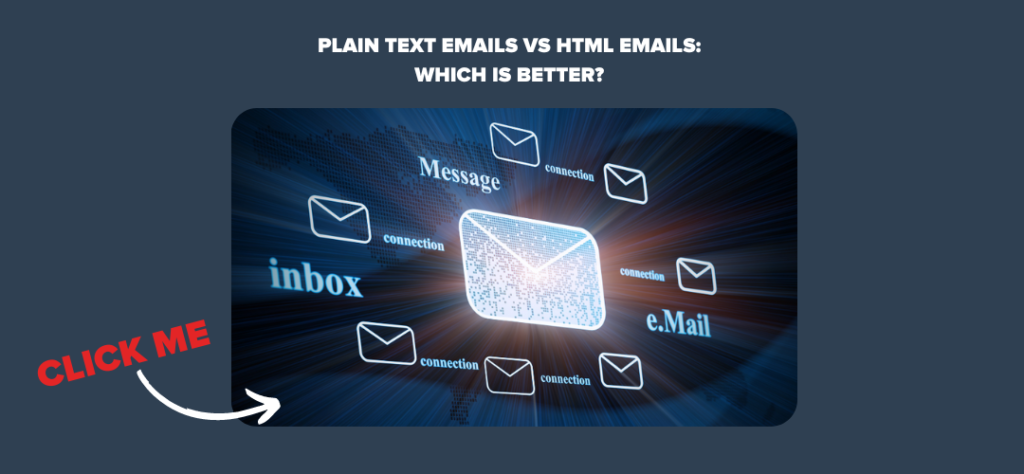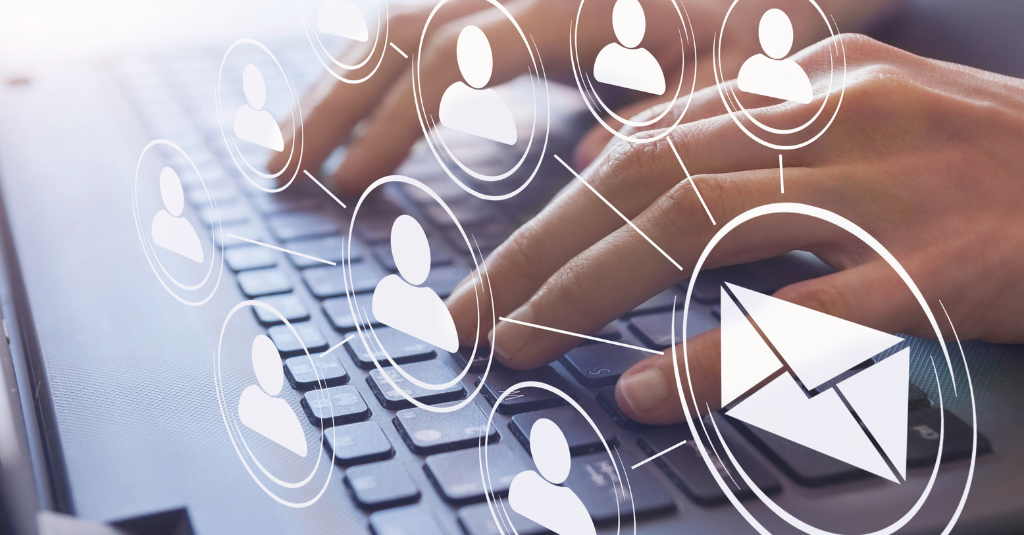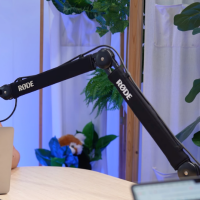Email marketing is one of the most powerful tools in your marketing toolkit, but it can also be incredibly time-consuming. If you’ve ever found yourself overwhelmed by endless email campaigns, or frustrated that your manual efforts aren’t driving the results you want, you’re not alone. How do you maintain consistent, personalised communication with your audience without spending all day writing and sending emails? The answer is email marketing automation.

At its core, email automation is about working smarter, not harder.
Instead of sending one-off emails to every subscriber, you can set up a system that works in the background, sending the right message to the right person at the right time.
And here’s the good news: you don’t need to be a tech expert to do it.
In this guide, you’re going to learn everything you need to know to get started with email automation.
What is Email Marketing Automation?
Email marketing automation is the process of setting up systems that automatically send targeted, timely emails to your audience based on their actions or specific time frames.

Instead of manually sending each email, you can create workflows that trigger messages when certain conditions are met — such as someone signing up for your newsletter or abandoning a shopping cart.
Automation saves you time and effort, allowing you to communicate with your audience on a larger scale while still maintaining a personal touch. With automation, you can nurture leads, increase conversions, and improve customer retention without needing to be hands-on every day.
The Benefits of Email Automation
Is email marketing automation worth the effort?
Here are some key benefits that can make email marketing automation worth it for your business:
1. Time-Saving Benefits
One of the most immediate advantages of email automation is the amount of time it frees up.

Instead of manually sending emails, you can set up workflows that run on autopilot, ensuring the right message is delivered at the right time. Whether it’s a welcome email for new subscribers or a follow-up message after a purchase, automation ensures your communications are consistent without requiring daily intervention.
That means more time to focus on strategy, content creation, or other important tasks in your business.
2. Increased Engagement and Revenue Potential
Automated emails often result in higher engagement rates because they’re sent based on specific triggers or user actions.
For example, an abandoned cart email sent shortly after someone leaves items in their cart can remind them to complete their purchase. Personalised workflows, like post-purchase follow-ups or birthday emails, create more relevant interactions that keep your audience engaged, which can lead to more sales and repeat business.
In fact, automated emails generate 320% more revenue than non-automated emails.
3. Personalisation at Scale
Automation allows you to deliver personalised messages to many people at once — something that would be impossible to do manually. You can use customer data, like purchase history or website behaviour, to send tailored content.
For instance, instead of sending a generic product recommendation, automation can help you automatically send an email when a user visits a particular product page.
This level of personalisation helps build stronger relationships with your audience. Customers feel valued when you acknowledge their unique preferences, leading to improved brand loyalty and customer satisfaction.
Types of Email Automation
Email marketing automation can be used for both B2C and B2B in many ways. Below are some of the key ways it can be used.
Email Automations for B2C
1. Welcome Email Sequences
When someone subscribes to your email list, the first thing they should receive is a welcome email. This is your chance to make a great first impression, introduce your brand, and guide new subscribers toward further action, like following your social media pages or exploring your product offerings.
A well-crafted welcome sequence can include:
- A warm introduction to your brand and values
- Special offers or incentives to encourage the first purchase
- Suggestions for popular content or products they may like
2. Abandoned Cart Emails
If you run an e-commerce business, abandoned cart emails are essential. Many customers add items to their cart but leave before completing the purchase. Automation lets you automatically remind them to finish the transaction, often leading to a significant boost in sales recovery.
Effective abandoned cart emails might include:
- A gentle reminder of the items left behind
- A limited-time discount or incentive to complete the purchase
- Customer reviews or product benefits to reinforce the value of the items
3. Post-Purchase Follow-Ups
Once a customer has made a purchase, the journey doesn’t end. Sending automated post-purchase emails can help build customer loyalty and encourage repeat business. These emails can serve multiple purposes, from thanking the customer for their order to suggesting complementary products.
A post-purchase follow-up could include:
- A confirmation and thank-you message
- A request for feedback or a product review
- Recommendations for products related to their purchase
Email Automations for B2B
1. Lead Nurturing Sequences
In B2B marketing, the sales cycle is typically longer, and prospects often need more information before making a decision. A lead nurturing sequence helps keep prospects engaged by providing valuable content over time, gently guiding them toward conversion.
A lead nurturing sequence might include:
- Educational content such as blog posts, whitepapers, or case studies related to their industry
- Testimonials or success stories from businesses in similar sectors
- Invitations to webinars, demos, or free consultations
2. Event Follow-Up Emails
If your B2B company attends trade shows, conferences, or hosts webinars, follow-up emails are essential to re-engage attendees and move them further along in the sales funnel. Automating these emails ensures timely follow-up, which can be crucial for capturing interest when it’s still fresh.
An event follow-up sequence might include:
- A thank-you note for attending
- A summary of key insights or takeaways from the event
- A call to action, such as booking a meeting or downloading a related resource
3. Onboarding Sequences for New Clients
For B2B companies offering software or subscription services, onboarding emails help new clients get started successfully. Automation allows you to guide new clients through setup, answer common questions, and provide resources to ensure they get the most out of your service.
An onboarding sequence might include:
- A welcome email with account setup instructions
- Links to product tutorials, best practices, or a support centre
- Check-ins after specific time frames to offer help or additional resources
4. Upsell and Cross-Sell Sequences
Once a client has purchased your product or service, automated upsell or cross-sell emails can introduce them to additional offerings that complement their current package. This helps increase customer lifetime value by identifying the right moment to suggest upgrades or related services.
An upsell or cross-sell sequence might include:
- Recommendations based on their purchase history or service usage
- Special offers or discounts on premium services or add-ons
- Case studies showing how other clients have benefited from these upgrades
5. Renewal Reminder Emails
For B2B businesses with subscription-based models, automated renewal reminder emails ensure that clients are aware when their subscription is about to expire. These emails can help prevent churn by making it easy for clients to renew or upgrade their plan.
A renewal reminder sequence might include:
- A friendly reminder when the renewal date is approaching
- A summary of the value they’ve received from the service so far
- A direct link to renew or upgrade their subscription
How to Set Up Your First Automated Campaign
While the exact steps will vary depending on the email marketing platform you use, there’s a few crucial steps that always remain the same.
Step 1: Map Out Your Customer Journey
Before diving into the technical setup of your automation, you need to fully understand your customer’s experience with your brand.
Before diving into the technical setup of your automation, you need to fully understand your customer’s experience with your brand.
The customer journey includes every interaction they have with you — from the first point of contact to post-purchase follow-ups or ongoing service.
By mapping out this journey, you can identify the key touchpoints where email automation will have the most impact.
Read: How to Build a Customer Journey Map [Free Template Included]
Consider the following stages of the customer journey:
- Lead Stage: New Subscriber
- Objective: Introduce your brand and build interest
- Automation Example: Send a welcome email introducing your company and offering a free resource (e.g., a whitepaper)
- Consideration Stage: Nurturing the Lead
- Objective: Provide value and move the lead closer to a decision
- Automation Example: Send case studies or product demos over time, addressing their pain points
- Decision Stage: Booking a Demo
- Objective: Guide the prospect to schedule a meeting or demo
- Automation Example: Trigger an email offering a call-to-action to book a consultation or demo, along with testimonials or client success stories
- Purchase Stage: Closing the Deal
- Objective: Seal the sale or convert the prospect into a customer
- Automation Example: Send a final reminder with an exclusive offer or discount if the lead has expressed interest but hasn’t committed yet
- Post-Sales Stage: Nurturing Customers
- Objective: Build loyalty and upsell/cross-sell
- Automation Example: After the purchase, follow up with onboarding emails, offer tutorials, or upsell related services/products based on their purchase
While your exact journey will look different depending on your brand, goals, and more, these are some examples of what it could look like.
The Customer Journey Map helps you identify these key automation points so that you know which email automation flows you’re going to build out and how it fits into the bigger picture.
Step 2: Identify Key Automation Points
Once you’ve created a Customer Journey Map, pinpoint where automation can step in to deliver the right message at the right time.
This might include:
- Welcome emails when someone subscribes to your list
- Abandoned cart emails when a customer leaves items in their cart
- Lead nurturing emails for prospects who aren’t ready to buy yet
- Re-engagement emails for subscribers who haven’t interacted in a while
Read: Increasing Your Sales Revenue with Email Autoresponders
Step 3: Choose Your Platform
There are many email marketing platforms out there (e.g., Mailchimp, ActiveCampaign, HubSpot), and each one has different automation capabilities. The platform you choose will depend on your specific needs, goals and problems you’re trying to solve.
When choosing your platform, consider factors like:
- Ease of use: Can you easily create and manage workflows?
- Features: Does it support the types of emails you want to automate?
- Integration: Can it integrate with your CRM or e-commerce platform?
- Budget: Does it fit your budget? As you scale, does the budget fit within your needs?
While the steps for setting up an automated campaign differ slightly depending on the platform, they generally involve selecting a trigger (e.g., someone joins your list or abandons a cart for example) and then building out a sequence of emails that will be sent based on the recipient’s actions.
Here’s what an email automation might look like in HubSpot:

Step 4: Write Your Emails
Once you’ve mapped your journey and selected the right automation points, it’s time to write your email content.
Keep the following tips in mind:
- Keep it personal: Use dynamic content like the recipient’s name and tailor the email based on their actions or interests
- Be clear and concise: Make your emails easy to read and ensure they have a clear call to action
- Optimise for mobile: Many people read emails on their phones, so make sure your design is mobile-friendly
- Decide on the format: Will you write your email in plain text or HTML?
Read: Plain Text Emails vs HTML Emails: Which is Better?

Step 5: Test and Launch
Before going live, test your automation setup. Make sure the triggers are working properly and that the emails flow in the right order. Test them on different devices to ensure they look good everywhere.
Once you’re confident that everything is functioning correctly, launch your automated campaign and monitor it closely.
How to Measure Success of Your Email Automations
Once your automated email campaigns are live, it’s crucial to track performance to ensure they’re achieving your goals.
Here are the key metrics to monitor:
1. Open Rate
- What it Measures: The percentage of recipients who opened your email
- Why it Matters: A low open rate could signal that your subject lines aren’t engaging enough or that your emails are landing in spam folders
2. Click-Through Rate (CTR)
- What it Measures: The percentage of recipients who clicked on a link within your email
- Why it Matters: A strong CTR indicates your content is relevant and enticing. If CTR is low, consider improving your call-to-action or the value offered in the email
3. Conversion Rate
- What it Measures: The percentage of recipients who completed the desired action (e.g., making a purchase or signing up for a demo)
- Why it Matters: This is a critical indicator of how effective your email campaigns are in driving sales or leads
4. Bounce Rate
- What it Measures: The percentage of emails that weren’t successfully delivered
- Why it Matters: A high bounce rate could indicate issues with your email list hygiene or technical problems with deliverability
5. Unsubscribe Rate
- What it Measures: The percentage of recipients who opt out of your emails
- Why it Matters: While some unsubscribes are normal, a sudden increase could mean your emails aren’t providing value, or you’re sending them too frequently
6. Revenue Per Email (RPE)
- What it Measures: The amount of revenue generated per email sent
- Why it Matters: This metric directly ties your email automation efforts to your bottom line. A high RPE means your emails are converting well
By regularly monitoring these metrics, you can tweak your campaigns to improve engagement and conversion rates. Test subject lines, email designs, and content to continuously optimise your results.
Best Practices & Common Pitfalls to Avoid in Email Automation
Email marketing automation can greatly enhance your marketing strategy, but only if implemented correctly.
Here are key best practices to follow, along with common mistakes to avoid:
Best Practices:
- Focus on Personalisation: Personalise your emails using customer data (e.g., name, purchase history) to make each message feel relevant
- Segment Your Audience: Divide your email list based on behaviour, demographics, or interests to send targeted content that resonates with each group
- Test and Optimise Regularly: A/B test subject lines, calls-to-action, and email designs to improve open and conversion rates
- Keep Emails Mobile-Friendly: Ensure your emails are responsive and look great on all devices, especially since many people read emails on their phones
Common Pitfalls to Avoid:
- Sending Too Many Emails; Overloading your subscribers with frequent emails can lead to high unsubscribe rates. Stick to a reasonable schedule
- Ignoring Data: Failing to monitor key metrics like open rates or bounce rates can leave underperforming campaigns running too long
- Over-Automation: While automation is powerful, overdoing it can make your emails feel robotic. Balance automation with personal touches where possible
- Neglecting Email List Hygiene: Regularly clean your email list to remove inactive or invalid email addresses. This helps maintain deliverability and engagement rates
By following these best practices and avoiding common pitfalls, your email automation will be more effective, engaging, and aligned with your business goals.
So, what’s next?
With the right strategy in place, email automation can turn into a powerful driver of sales and customer retention.
The key is getting started with a Customer Journey Map and identifying places for automation.
But the way you write your email is just as important as the automation you use. Check out our article below on how to write a killer email.
Read: How to implement the 9-word email in your sales strategy















